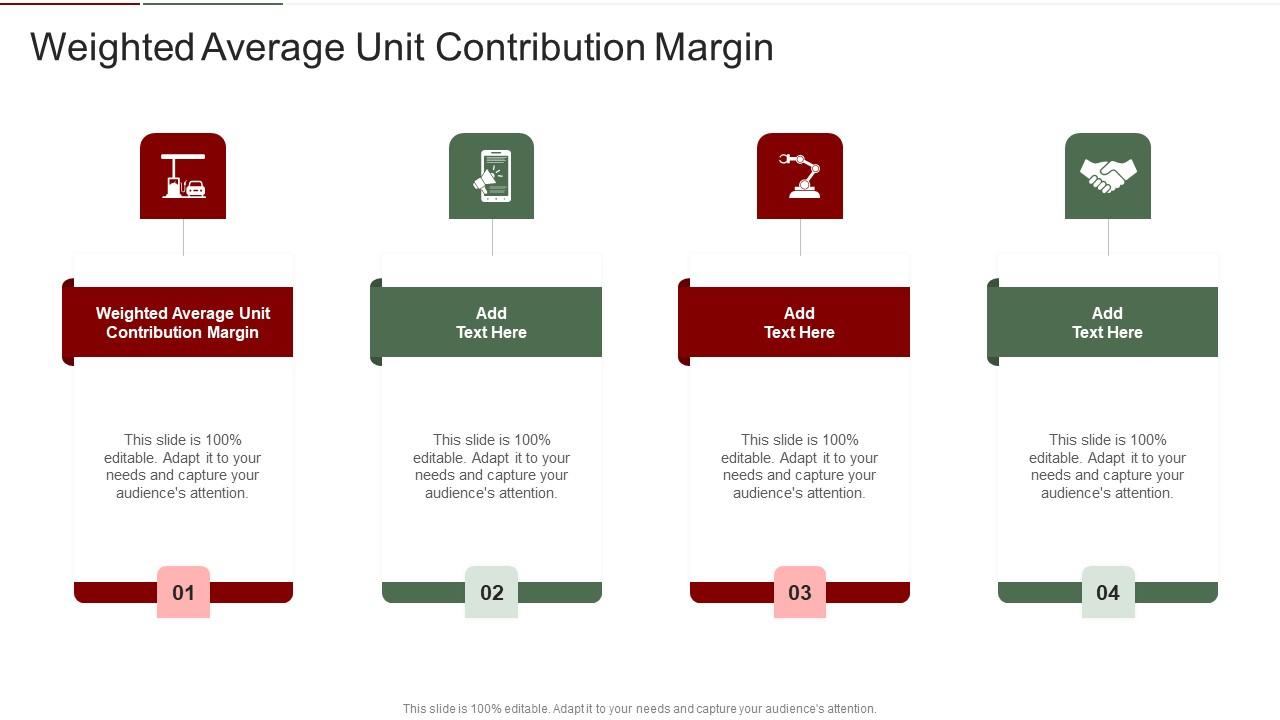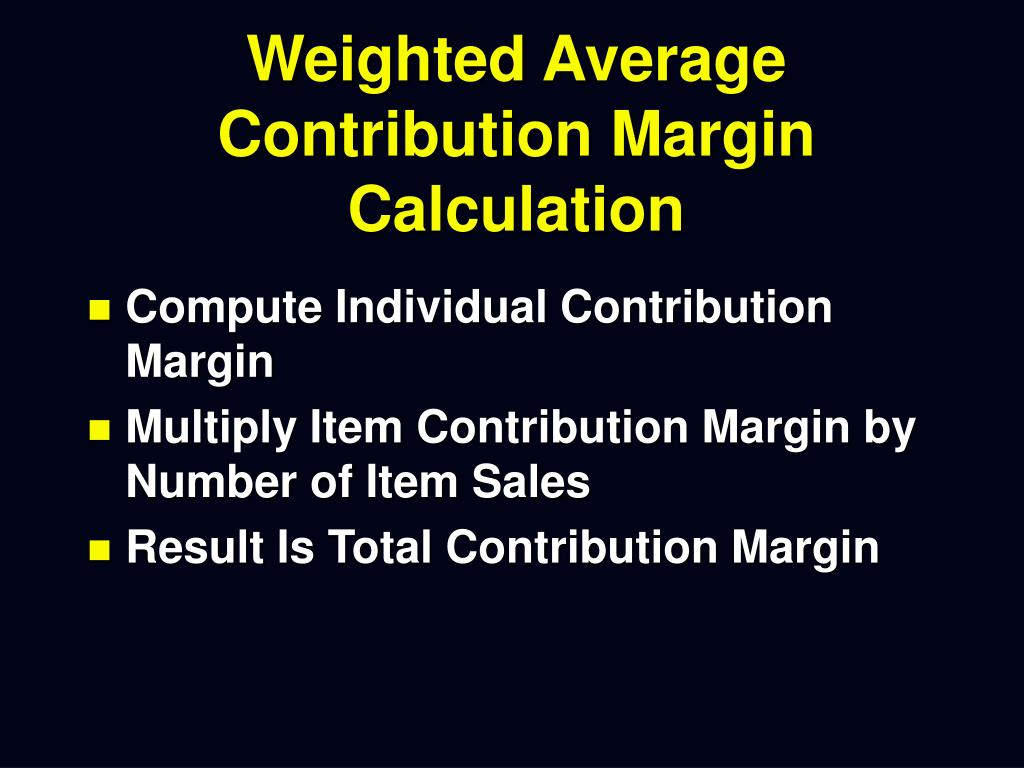
The formula used to solve for the break- even point in units for multiple-product companies is similar to the one used for a single-product company, with one change. Instead of using the contribution margin per unit in the denominator, multiple-product companies use a weighted average contribution margin per unit. (3) The graphical method With the graphical method, the total costs and total revenue lines are plotted on a graph; $ is shown on the y axis and units are shown on the x axis.
FAR CPA Practice Questions: Capital Account Activity in Pass-through Entities

This method takes into account the contribution margin and sales volume for each product in your mix. Break-even analysis for multiple products is made possible by calculating weighted average contribution margins. In our example, the sales revenue from one shirt is \(\$15\) and the variable cost of one shirt is \(\$10\), so the individual contribution margin is \(\$5\). This \(\$5\) contribution margin is assumed to first cover fixed costs first and then realized as profit. On the other hand, variable costs are costs that depend on the amount of goods and services a business produces. Likewise, a cafe owner needs things like coffee and pastries to sell to visitors.
Example 1: Calculating Weighted Average Contribution Margin for a Product Line
To obtain a more accurate assessment of financial performance, it is crucial to complement Contribution Margin analysis with metrics that incorporate fixed costs, such as Net Profit Margin or Return on Investment calculations. When comparing different business segments or divisions, this metric allows for a more nuanced evaluation by considering the relative size of each segment within the total revenue mix. When a company assumes a constant sales mix, a weighted average contribution margin per unit11 can be calculated by multiplying each product’s unit contribution margin by its proportion of total sales. The resulting weighted unit contribution margins for all products are then added together. We know that total revenues are found by multiplying unit selling price (USP) by quantity sold (Q). Also, total costs are made up firstly of total fixed costs (FC) and secondly by variable costs (VC).
AccountingTools
Subtract your variable costs per unit from the sales price per unit to arrive at the margin. While you go forward with the contribution margin only for the WACM calculation, you also can use the information already gathered to determine the contribution margin ratio per product line. CVP analysis looks primarily at the effects of differing levels of activity on the financial results of a business. The reason for the particular focus on sales volume is because, in the short-run, sales price, and the cost of materials and labour, are usually known with a degree of accuracy.
Formula and Calculation of Contribution Margin
Total variable costs are found by multiplying unit variable cost (UVC) by total quantity (Q). By putting this information into a simple equation, we come up with a method of answering CVP type questions. Contribution margin refers to the sales revenue a business earns from a particular type of product minus its variable expenses. When the business offers several different products, the weighted average contribution margin, or WACM, helps determine the number of products the business has to sell to break even. The weighted average contribution margin ratio formula takes into account the costs the business has to pay to produce and sell the products, as well as the price of each product.
One limitation of weighted average contribution margin is that it assumes all products or services are selling in the same proportion, which may not always be the case. Additionally, it does not take into account fixed costs, which can impact overall profitability. It is also important to regularly review and update the contribution margins used in the calculation to ensure accuracy. By disregarding fixed costs in Weighted Average Contribution Margin analysis, businesses may misinterpret their operational efficiency and make inaccurate strategic decisions based on profit margins alone. Neglecting fixed expenses can skew the perceived profitability of different products or services, potentially leading to suboptimal pricing strategies and resource allocations.
- To calculate the weighted average contribution margin, add up the individual contribution margins for each product or service the business offers.
- Since machine and software costs are often depreciated or amortized, these costs tend to be the same or fixed, no matter the level of activity within a given relevant range.
- This means that the weighted average contribution margin for the entire business is $10/unit (calculated as $150,000 total contribution / 15,000 units).
- In our example, the sales revenue from one shirt is \(\$15\) and the variable cost of one shirt is \(\$10\), so the individual contribution margin is \(\$5\).
You will also learn how to plan for changes in selling price or costs, whether a single product, multiple products, or services are involved. By calculating what is accounts receivables and how do you record its, businesses can accurately assess the financial impact of different product lines or services. For instance, a company with multiple product offerings can use this analysis to determine which products are the most profitable and strategically focus resources on optimizing those areas. This method helps in identifying cost structures that may be affecting overall profitability. By understanding these insights, companies can make informed decisions regarding pricing strategies, product portfolio management, and resource allocation, ultimately driving financial stability and growth. At a contribution margin ratio of \(80\%\), approximately \(\$0.80\) of each sales dollar generated by the sale of a Blue Jay Model is available to cover fixed expenses and contribute to profit.
Keep in mind that contribution margin per sale first contributes to meeting fixed costs and then to profit. The CVP relationships of many organizations have become more complex recently because many labor-intensive jobs have been replaced by or supplemented with technology, changing both fixed and variable costs. For those organizations that are still labor-intensive, the labor costs tend to be variable costs, since at higher levels of activity there will be a demand for more labor usage. The concept of contribution margin is applicable at various levels of manufacturing, business segments, and products.
